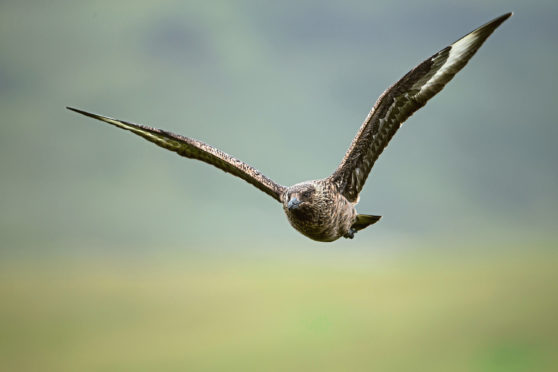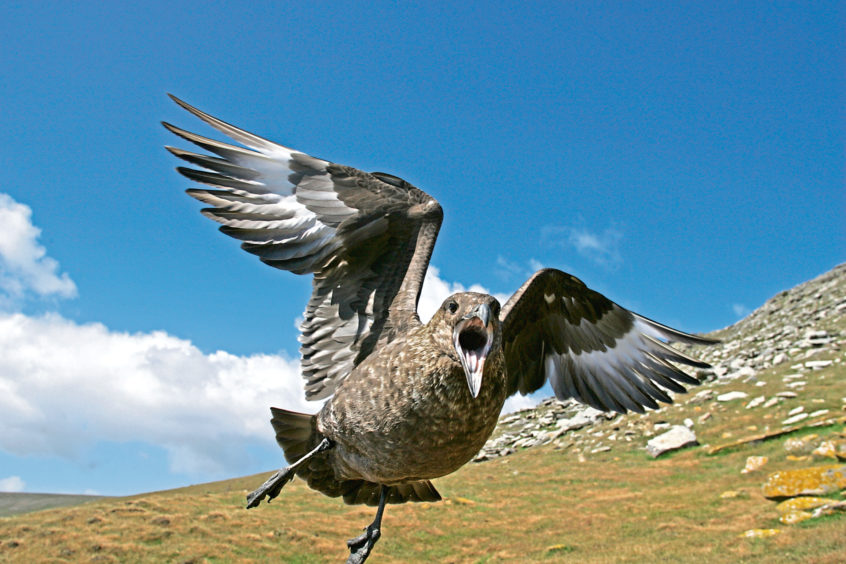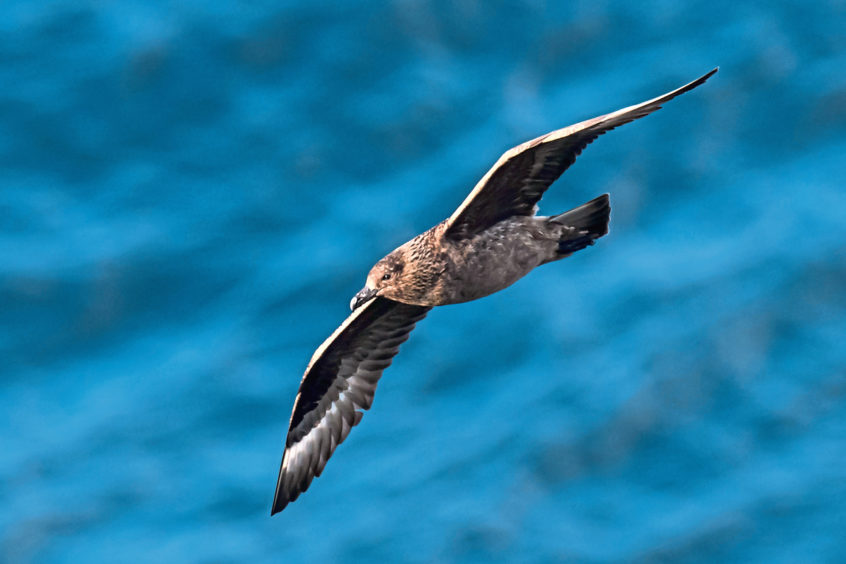The cliffs at Fowlsheugh are packed with more than 130,000 breeding seabirds during the spring and summer months. It is the largest mainland seabird colony on the east coast of Scotland.
Incoming! You could almost smell the fear in the air as this dark-winged marauder swept along the cliff tops, leaving panic and consternation amongst the breeding seabirds in its wake.
The bonxie had suddenly appeared out from nowhere here at Fowlsheugh, south of Stonehaven, scattering the wheeling kittiwakes, whilst at the same time, bolder herring gulls rose into the air to drive the intruder away.
These seabirds had reason to be concerned, for the bonxie is the ultimate sea pirate, harassing other birds to release or disgorge their fish catch, which it will then steal. Bonxies even attack and kill smaller seabirds, such as puffins.
Three times this bonxie swooped along the cliff top, but each time its attack run failed, and soon it soared away into the hazy blue horizon.
Also known as the great skua, bonxies normally occur further north than here, such as Shetland, and I wasn’t sure whether this was a non-breeder that had taken up residence at Fowlsheugh for the summer, or whether it was just passing through on migration.
Whatever the case, it was a surprise sighting and added colourful drama to what had been a wonderful afternoon exploring the cliffs. This is a place abuzz with life, an incredible seabird city, with the white guano-covered rock ledges crammed full of nesting kittiwakes, guillemots and razorbills, their cacophony of excited calls carrying far in the briny breeze. Out at sea, hundreds of guillemots bobbed in the water and an aerial conveyor belt of kittiwakes rode the air currents as they swooped along the cliff edges.
Kittiwakes are such elegant little gulls, spending most of the year out at sea in search of small surface-swimming fish or planktonic animals and even venturing as far as Greenland and eastern Canada in their oceanic wanderings.
At the far end of the RSPB reserve here, a small dumpy puffin with its multi-coloured bill, and black and white dinner-suit plumage caught my eye, resting on a grassy outcrop half-way down a cliff.
I watched the puffin for a while, taking in the other colour all around me. White drifts of sea campion adorned the ground and linnets bounded along a nearby field margin. Soon, the puffin whirred away down to the sea and I continued on my way, before stopping once more to marvel at a fulmar gliding effortlessly along the cliff top – how can it fly so fast without even a single flap of the wings?
Like the kittiwake, fulmars are great wanderers, spreading their wings far and wide in their quest for the ocean’s bounty. But as with other seabirds, they face great challenges – global warming impacting upon food abundance and the ever-present threat of inadvertently ingesting marine plastic.
As I made my way along the cliff, I couldn’t help but wonder what the future holds for our precious seabirds; they are the pearls of the ocean, so special, yet so vulnerable.












